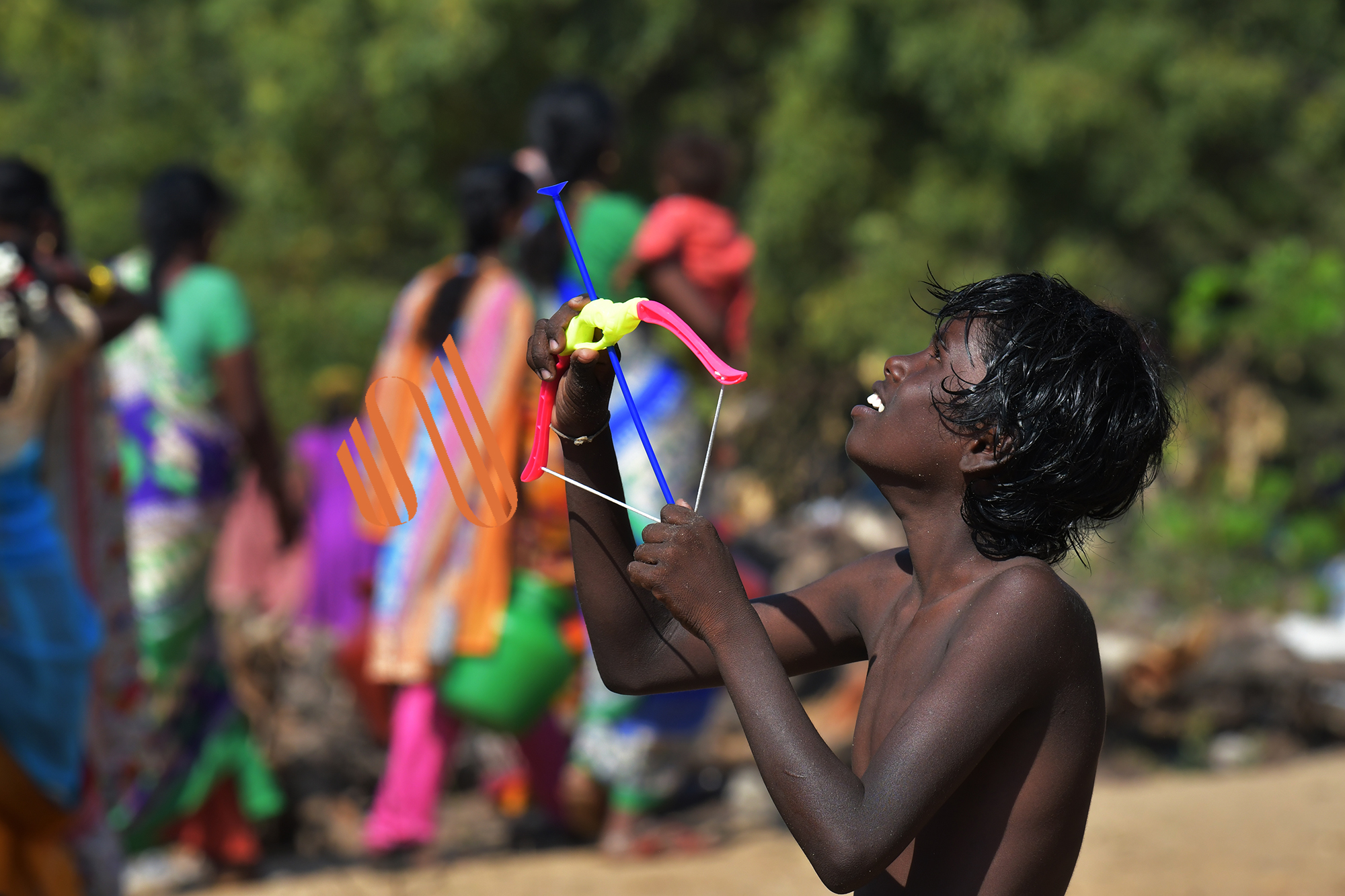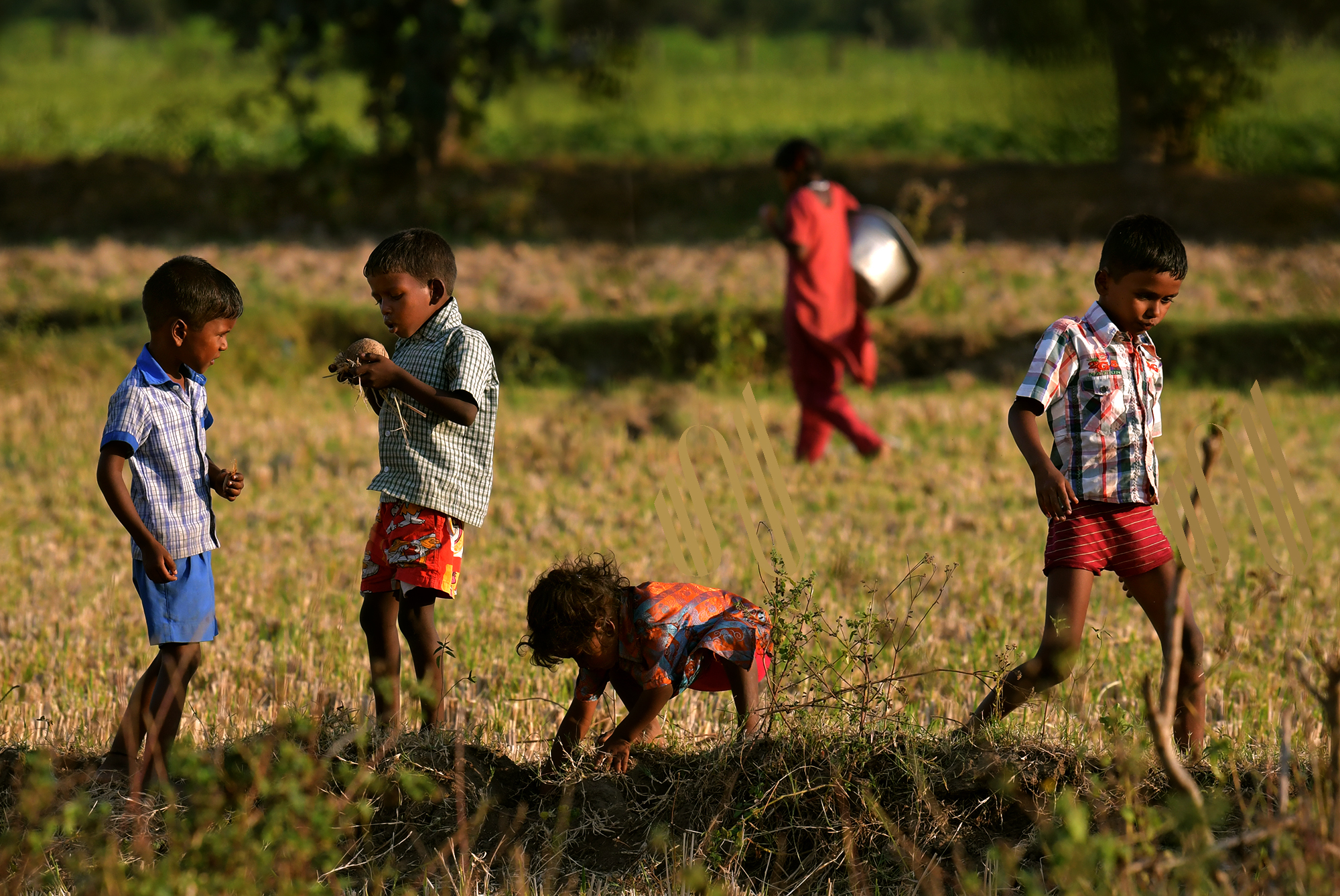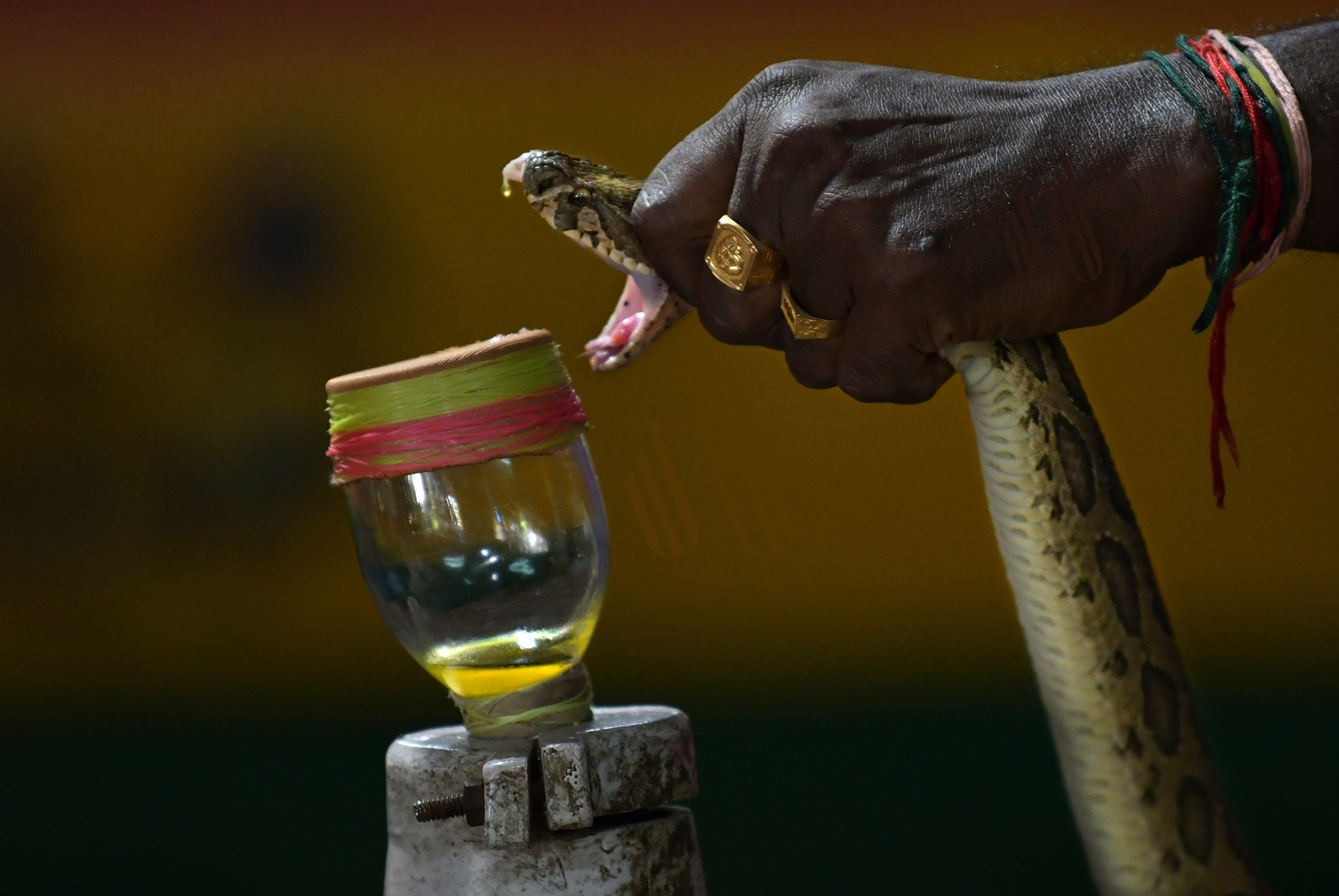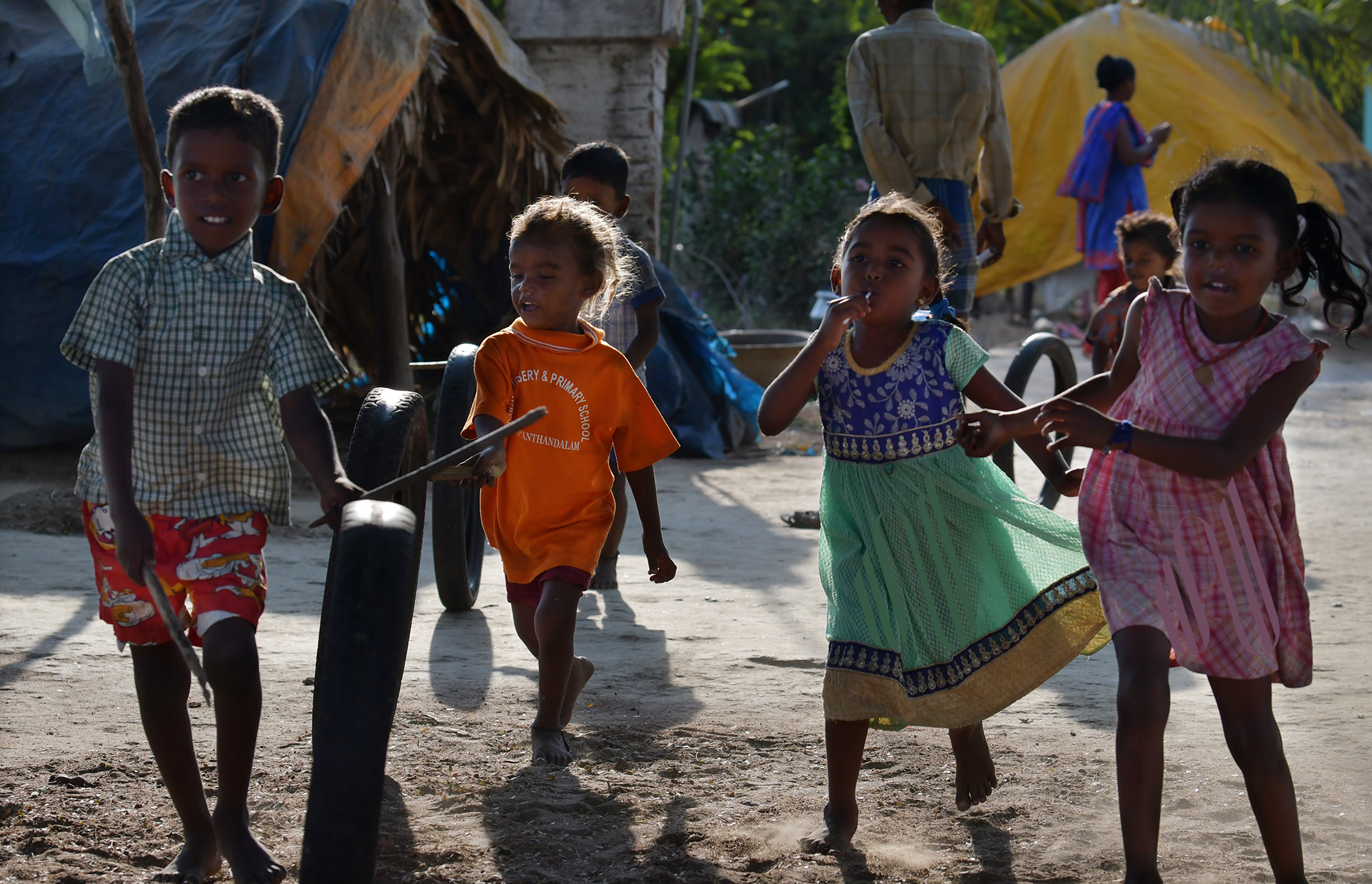
Snakes and Ladders
The Irulas of Chengalpattu, famed as reptile catchers,
aspire for a better life for their children
At 65, Vedan still puts to use his skill in catching cobras and vipers. The traditional vocation has helped Irula tribesmen like him from a hamlet in Chengalpattu, near Chennai, transition from the life of a hunter-gatherer to earning an income through his occupation. He hands over the reptiles he catches to the Irula Snake Catchers’ Industrial Cooperative Society, which helps him support his family, which includes seven children.
The Chengalpattu settlement resembles a traditional hamlet full of thatched huts with hammocks and a few dogs. The latter two are markers of an arboreal and hunting life: the hammock helps to stay put in the safety of tall trees and the dogs to chase game. “But most of the children now go to school, and aspire to join the mainstream in their own right,” Vedan says. But for the paucity of money and other resources, the hamlet offers a good setting for a child to grow up, in the tightly-knit community.
During the tribe’s Maasi Magham festival, celebrated on the shore at Mahabalipuram during February-March, Irulas from villages across Tamil Nadu, Karnataka and Kerala join in the celebrations and worship Goddess Kanniyamman. Many senior tribes-people feel the community is losing its fables and traditional songs and practices. Even their language is under threat as their youngsters mostly speak Tamil, Kannada or Malayalam. Some of them say the community was known for treating snakebite victims, but those skills are dwindling. However, the venom extracted from the snakes they catch helps in production of anti-venom. It’s a vocation that helps at least some of them retain a tenuous connection with a lifestyle that is fast fading.
Romulus Whitaker and other conservationists established the snake catchers’ cooperative society in 1978. The innate Irula skill for finding and catching snakes is widely admired. In the past, the tribe used to catch snakes just for the skin. Now, their skill is put to use to save lives.

An annual festival, during which Irulas gather in large numbers. These tribal people are famed for their snake and rat catching skills.
Irulas live in large groups isolated from other communities. Here, a group of women prepares the evening meal, keeping a close eye on their young children.


Irulas live in large groups isolated from other communities. Here, a group of women prepares the evening meal, keeping a close eye on their young children.

The Irulas are a nomadic people, living in make-shift hut dwellings and usually accompanied by a pair of hunting dogs. Their hammocks offer them rest wherever they find themselves.
An Irula man displaying the age-old expertise of catching snakes, other reptiles, and rats. He flushes them out of their burrows by enclosing the mouth of the hole with smoke emitted from pots.


An Irula man displaying the age-old expertise of catching snakes, other reptiles, and rats. He flushes them out of their burrows by enclosing the mouth of the hole with smoke emitted from pots.

Known in folklore for being skilled bowmen, the Irula’s famed skills are losing relevance as they integrate further with the outside world.
Irula children honing their traditional instincts of searching for sub-subterranean creatures.


Irula children honing their traditional instincts of searching for sub-subterranean creatures.

A snake handler looks on as a cobra peeks out from in between the pots. Snakes caught by the Irulas are collected and handed over to the Irula Snake Catcher’s Industrial Cooperative Society in Chennai.
Romulus Whitaker, seen in the background, created the Cooperative Society as a means to stop the killing and skinning of snakes while preserving the Irula’s ancient skills and traditions.


Romulus Whitaker, seen in the background, created the Cooperative Society as a means to stop the killing and skinning of snakes while preserving the Irula’s ancient skills and traditions.

A Russel’s Viper being milked for its venom. The venom collected from various snakes at the Cooperative is used across India and abroad to make anti-venom.
Irula women performing traditional rituals during the festival of their Goddess Kanniamma held at Mahabalipuram.


Irula women performing traditional rituals during the festival of their Goddess Kanniamma held at Mahabalipuram.

Irula men making ritual fire offerings at the Mahabalipuram beach. The celebration, held in February-March, attracts a large Irula attendance from Tamil Nadu, Karnataka and Kerala.
The festival, on Maasi Magham, draws large numbers from the 200,000-strong Irula community.


The festival, on Maasi Magham, draws large numbers from the 200,000-strong Irula community.

A new world for an ancient tribe: Irula children stay connected to their roots given their closeness to nature.
Irula children in bright blue school uniforms. Education is an important part of the Irula way of life as they seek to integrate with urban society,. This effort is supported by official welfare organisations.


Irula children in bright blue school uniforms. Education is an important part of the Irula way of life as they seek to integrate with urban society,. This effort is supported by official welfare organisations.



